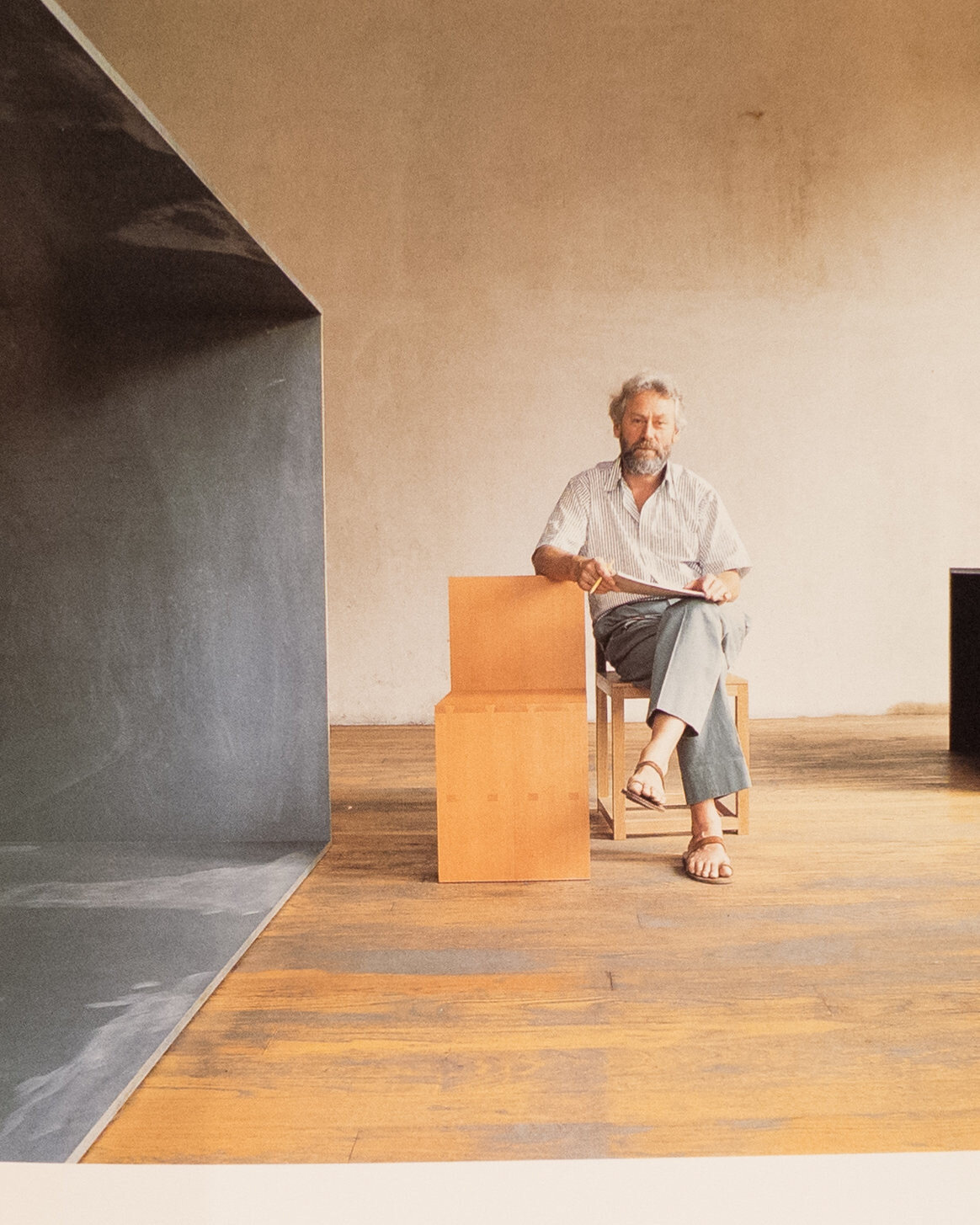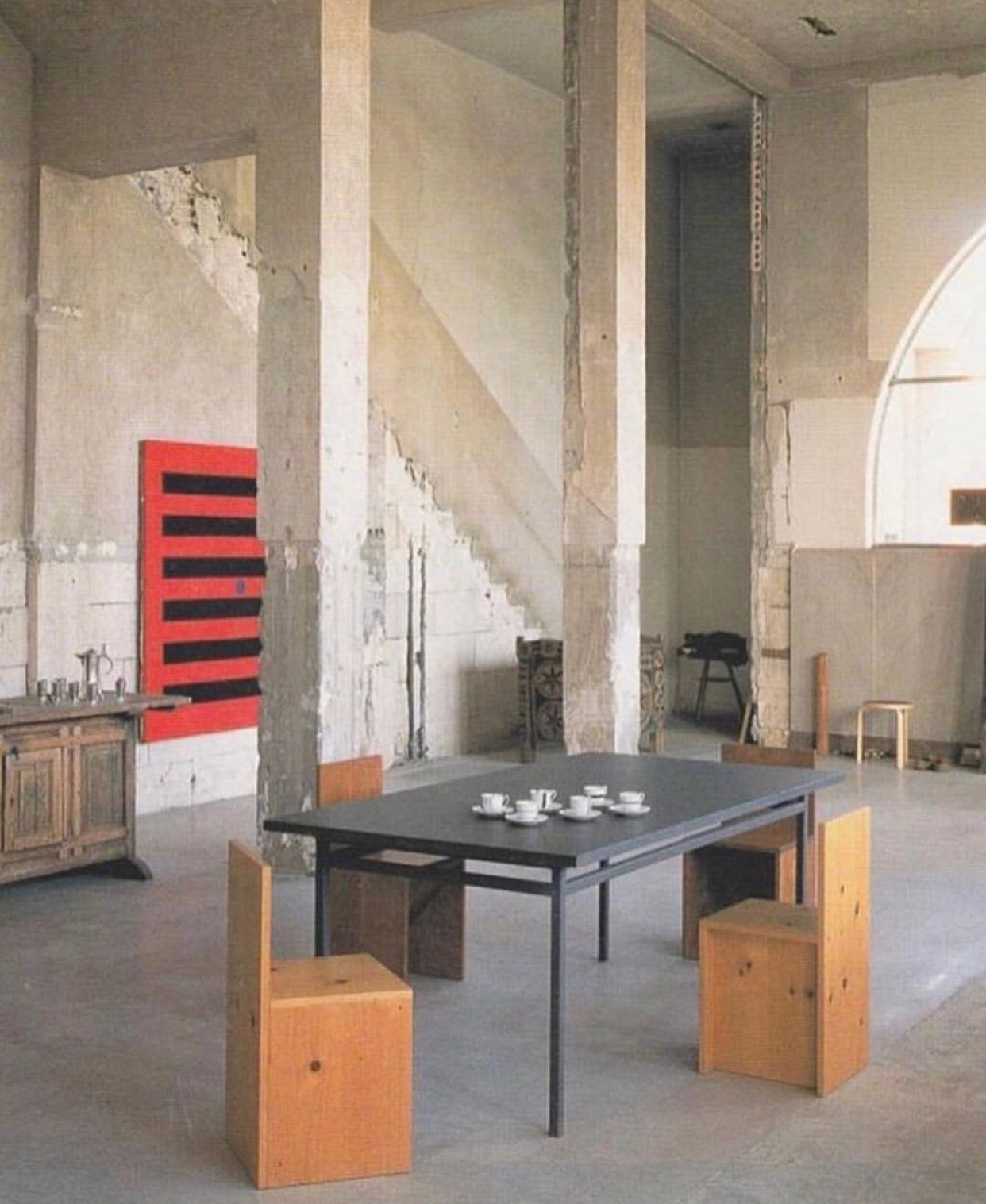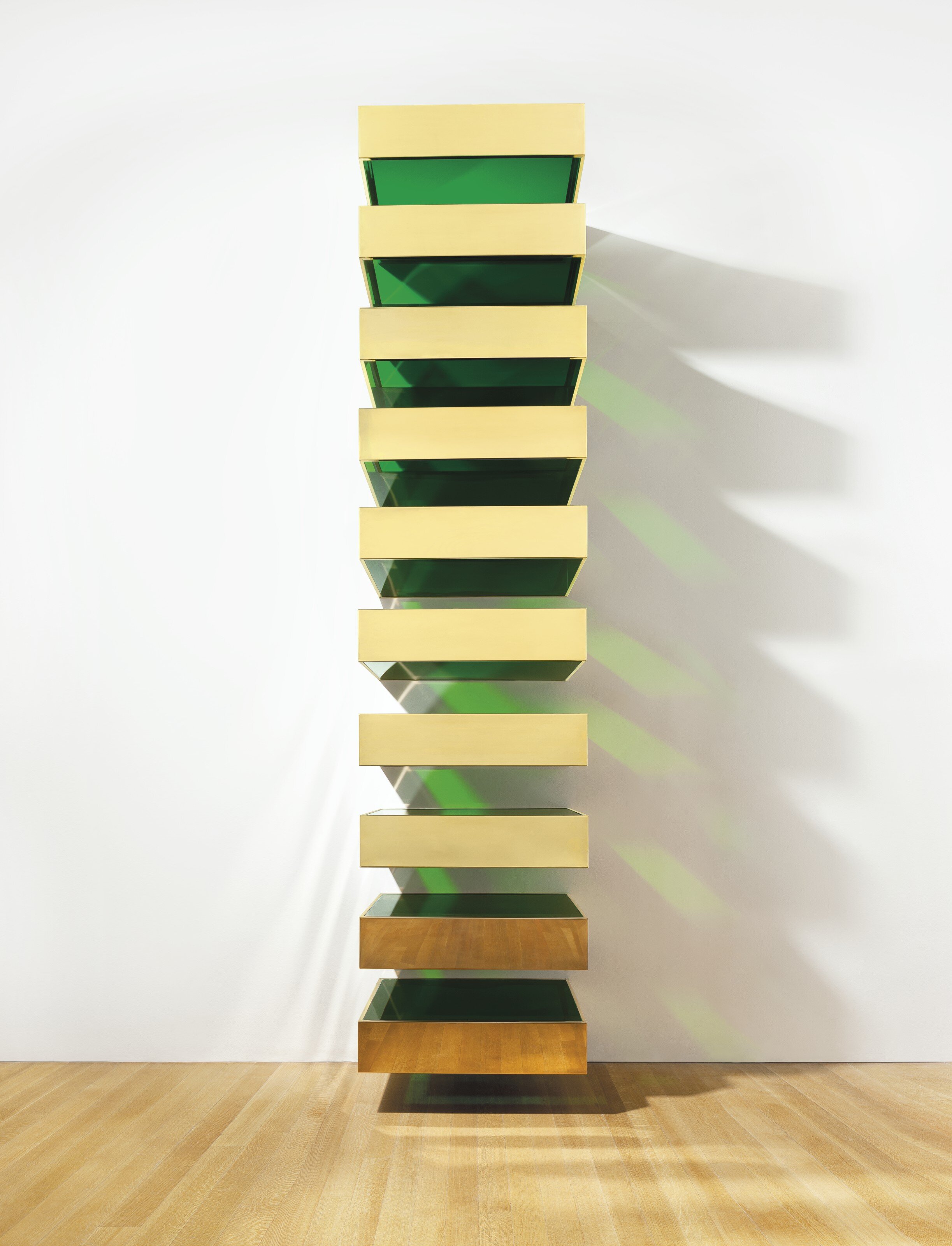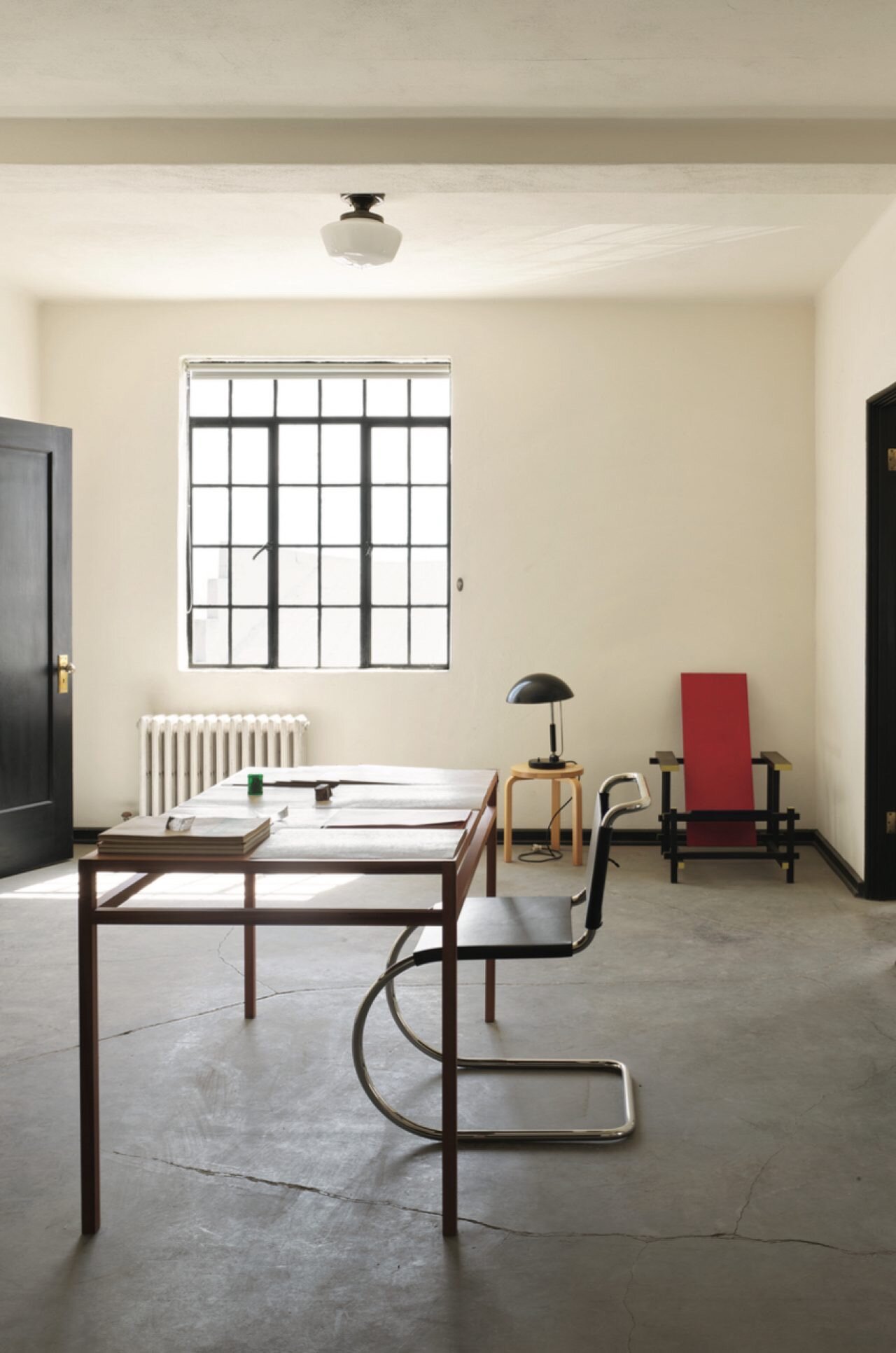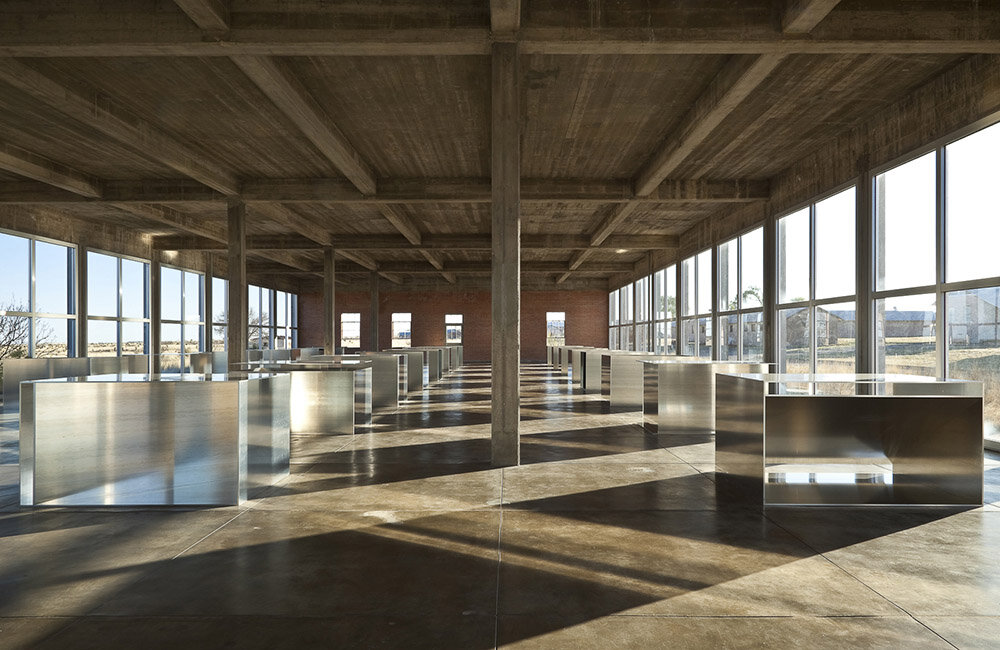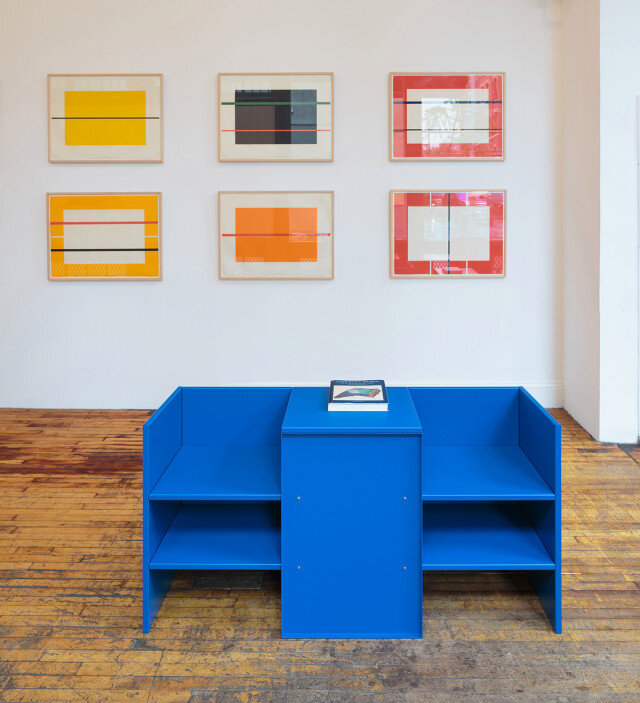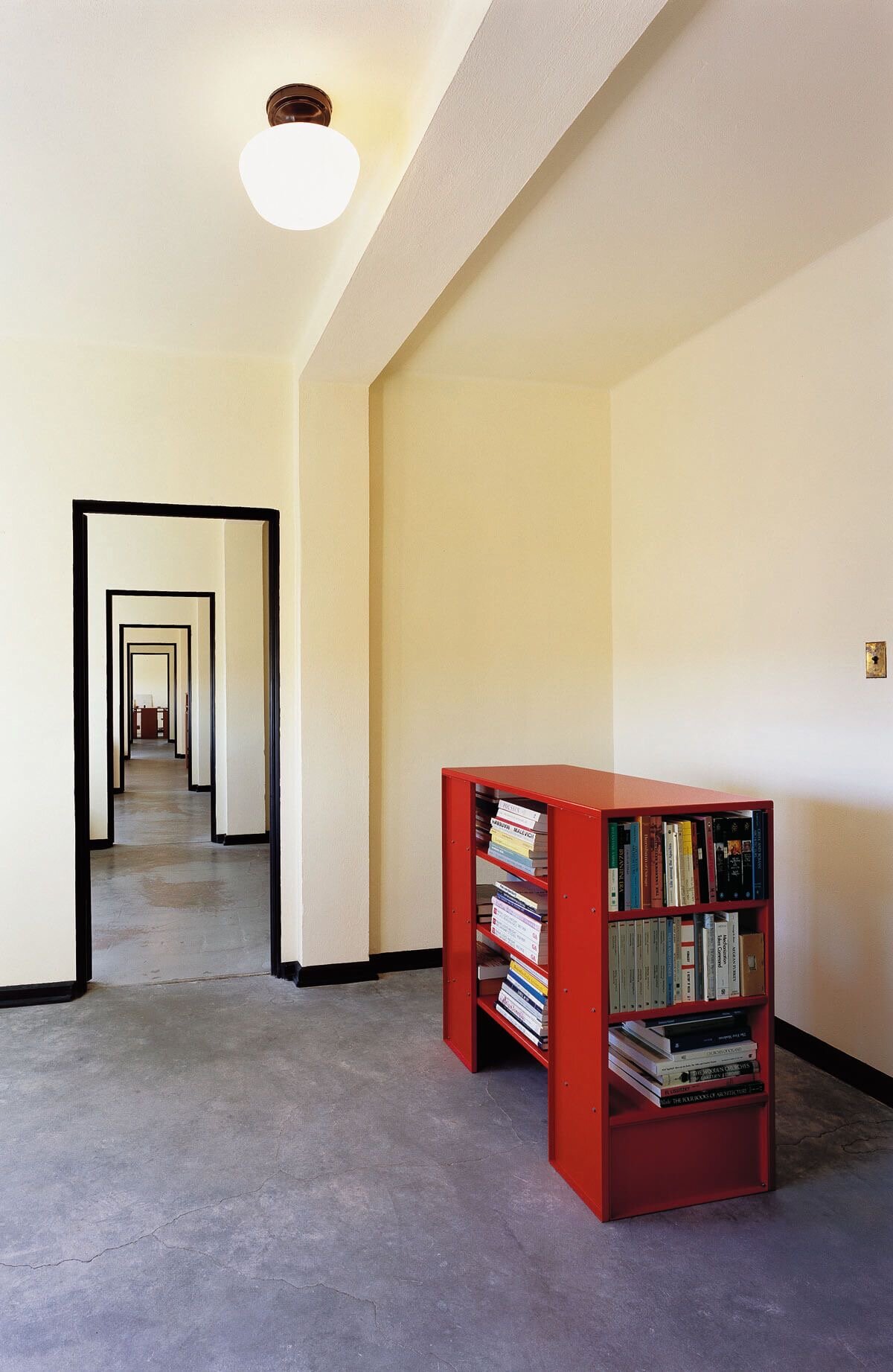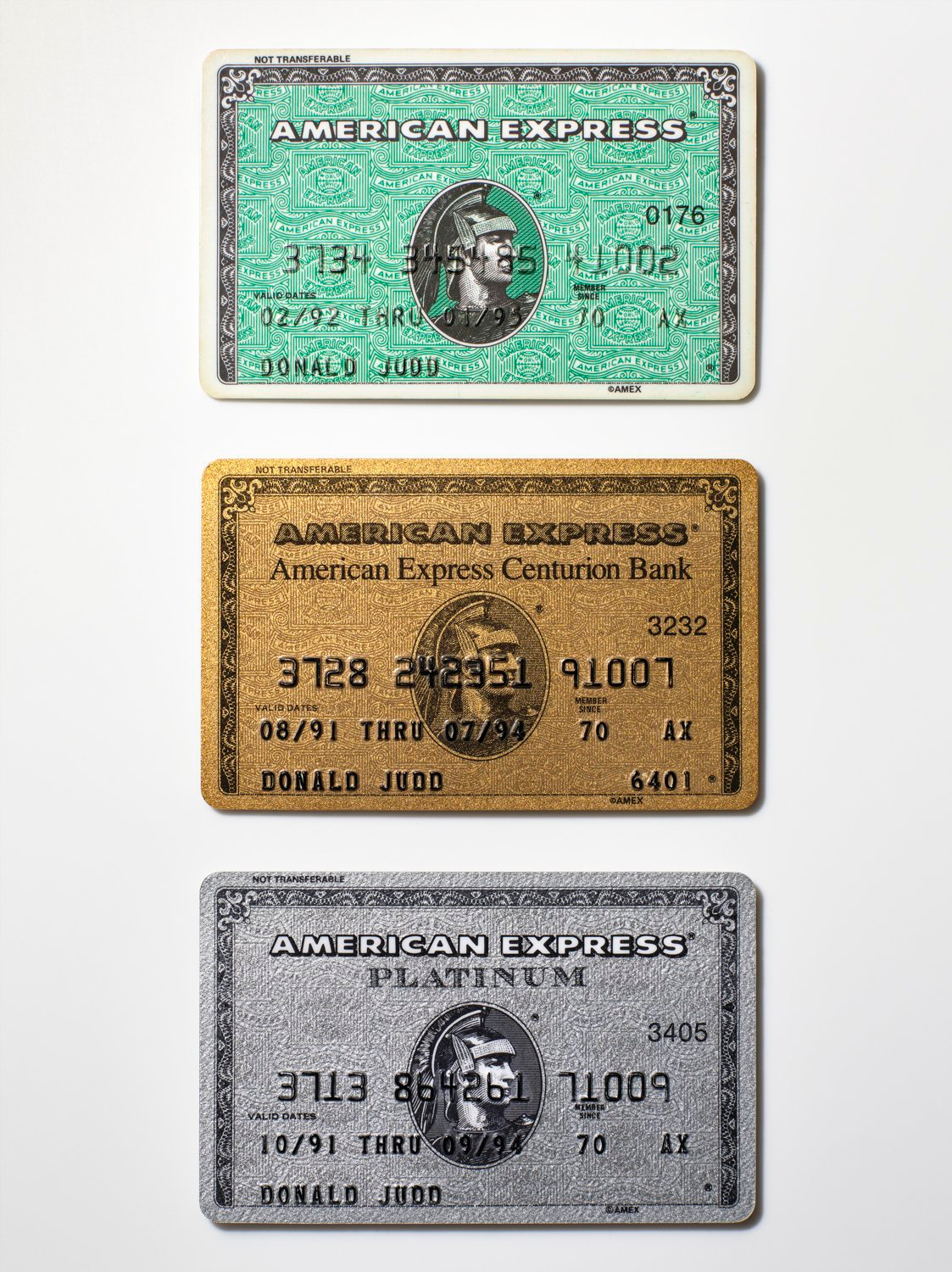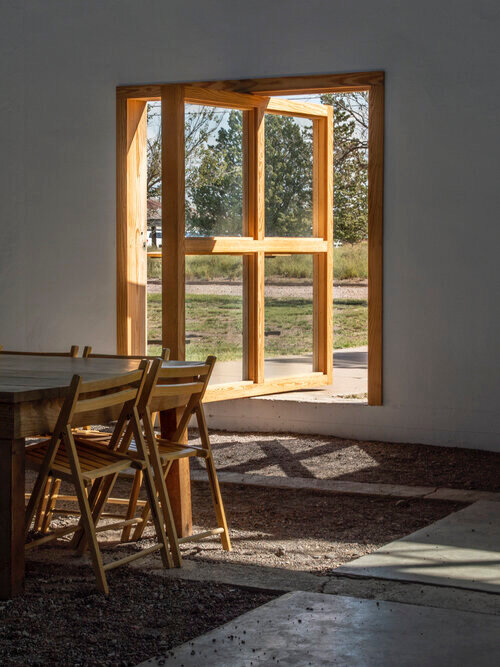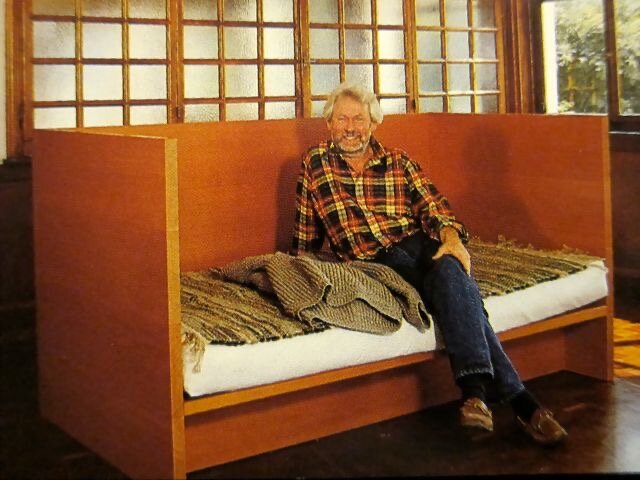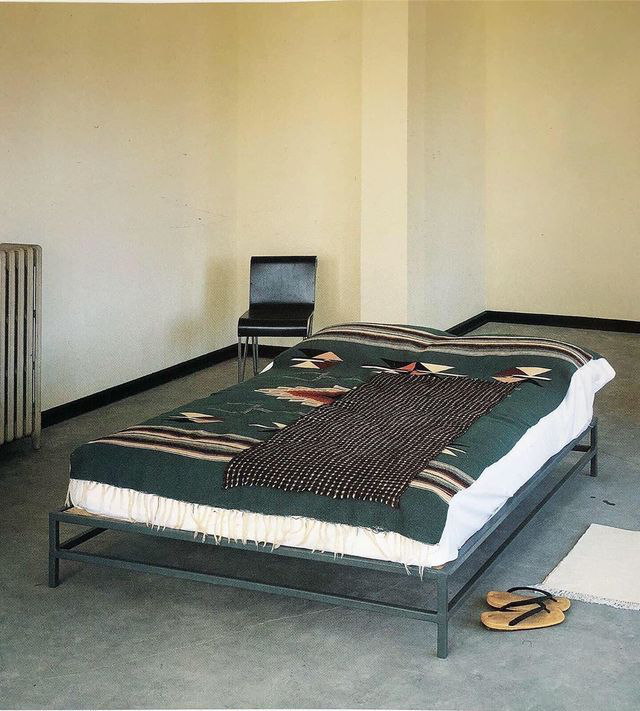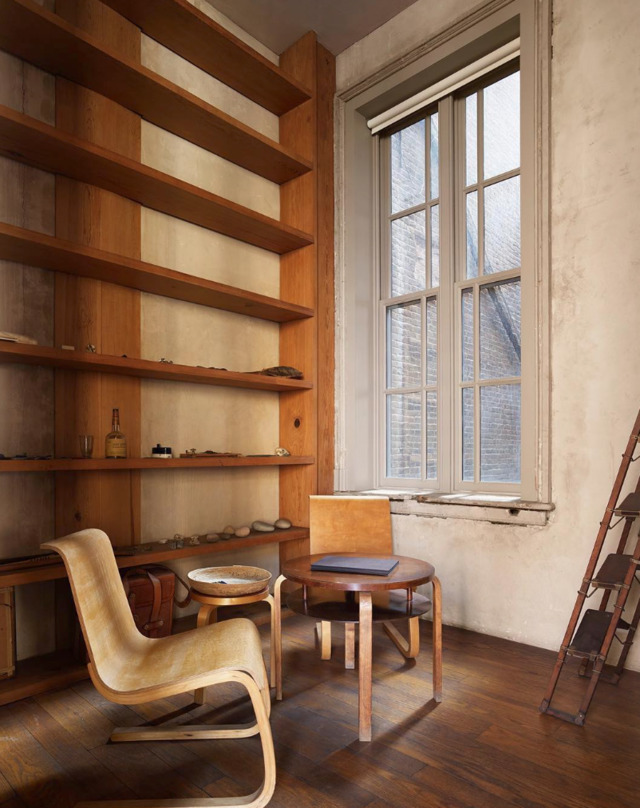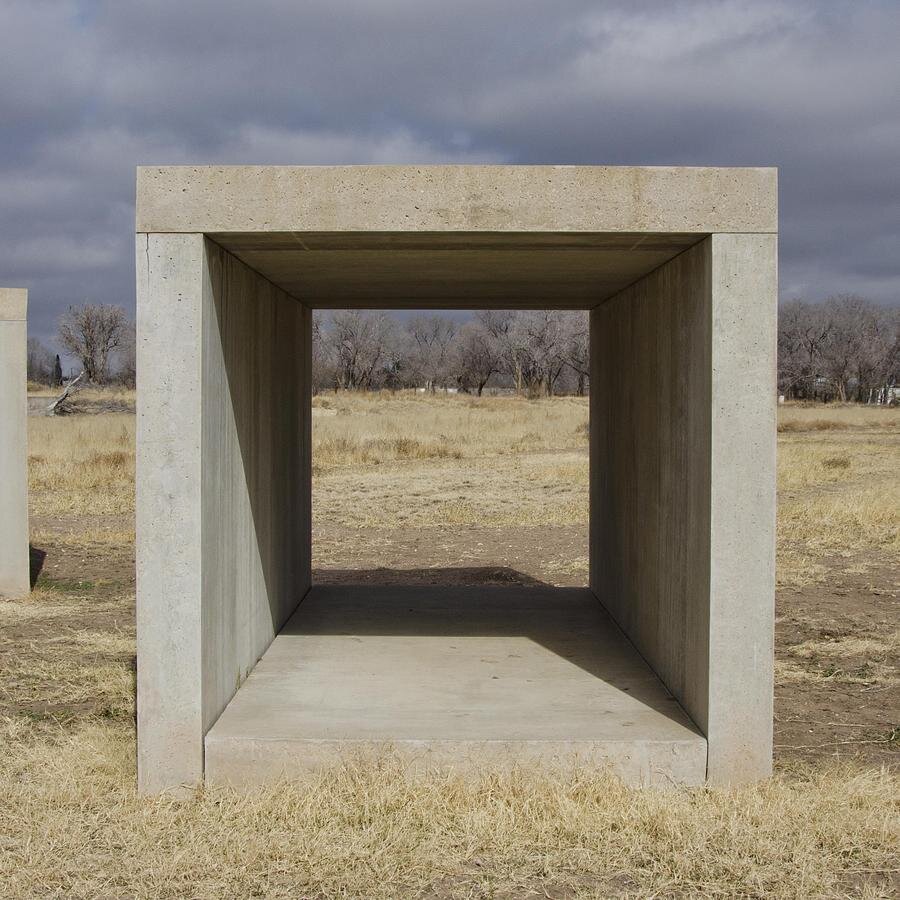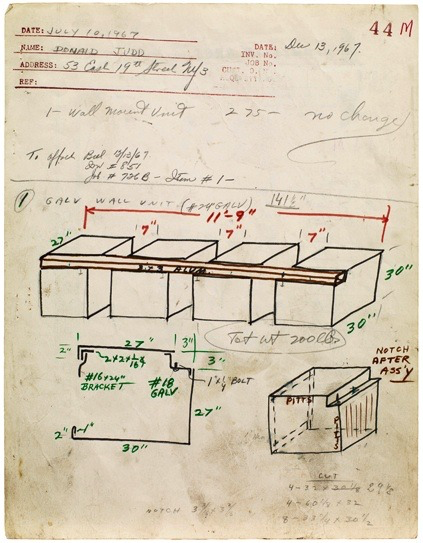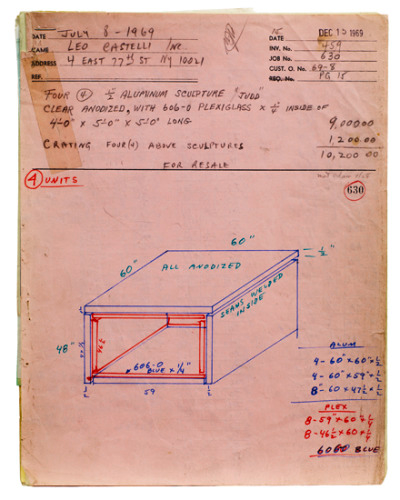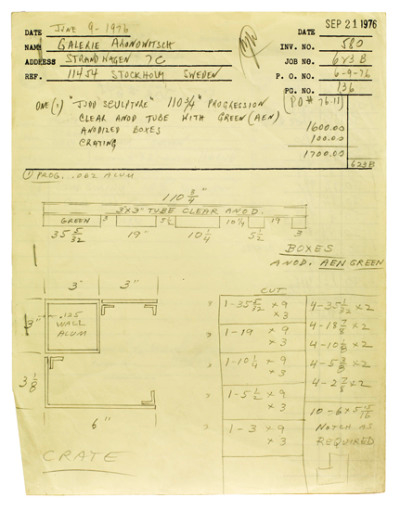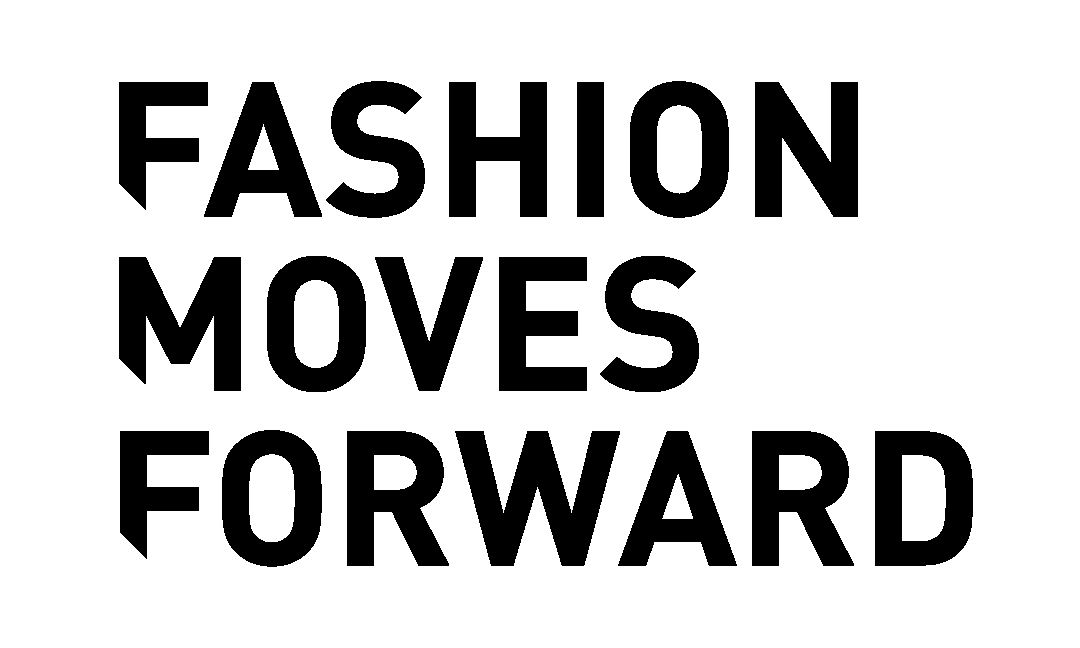Artist Exhibition: Donald Judd
Donald Judd is a landmark figure in the history of postwar art. In the 1950s, he studied philosophy and art history and took classes at the Art Students League in New York. He was first publicly recognized as an art critic, writing reviews for Arts magazine from 1959–65. It was during this time that he developed from an abstract painter into the producer of the hollow, rectilinear volumes for which he became well known. Key to this transformation was his essay “Specific Objects,” written in 1964 and published the following year in Arts Yearbook 8. The text celebrated a new kind of artwork untethered from the traditional frameworks of painting and sculpture, focusing instead on an investigation of “real space,” or three dimensions, using commercial materials and an emphasis on whole, unified shapes.
In 1964 Judd turned to professional sheet-metal fabricators to make his work out of galvanized iron, aluminum, stainless steel, brass, and copper. This effectively removed from the artist’s studio any hands-on art making, a shift that would hold great importance for the then-rising generation of Conceptual artists, who held that ideas themselves, exempt from any materialization, can exist as art. In the mid-to-late 1960s, Judd produced and exhibited a large number of his iconic forms. These range from what are referred to as “stacks”, which are hung at even intervals from floor to ceiling; “progressions", whose measurements follow simple numerical sequences; bull-nosed shaped protrusions from the wall; and box-like forms that are installed directly on the floor. This sculptural vocabulary continued to serve as a basic foundation from which Judd developed many versions—in varied combinations of metals, colored Plexiglas, and plywood—until his death in 1994.
In 1968 Judd purchased a five-story living and working space in New York’s Soho neighborhood. Several years later, he would take up residence in Marfa, Texas, where he was drawn to the Chihuahuan Desert landscape and sparse population. In both New York and Texas, he designed his homes to include permanent installations of his work, alongside that of peers such as Larry Bell, John Chamberlain, Dan Flavin, and others. In Marfa, this project eventually grew, with the financial help of the fledgling Dia Art Foundation, into a large-scale, multi-building museum now called The Chinati Foundation. Judd’s deliberate installations, and the sculptures that he created, indicate that he considered space itself to be a material just as essential as the industrial surfaces out of which his objects were constructed. Architecture and design also greatly interested him, and his activities extended to preserving and repurposing existing buildings, and to furniture design and printmaking. Throughout his life, Judd continued to publish articles advocating the value of critical thought and the importance of artists to society.
Introduction by Annie Ochmanek, Curatorial Assistant, Department of Painting and Sculpture, 2017
